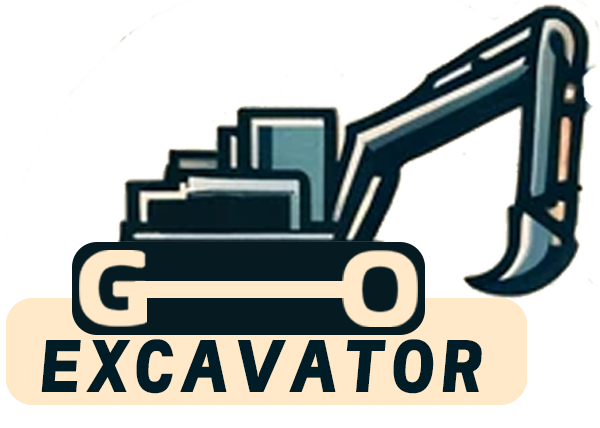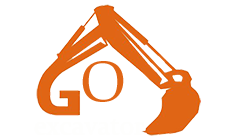
Dragline excavators are among the largest and most powerful pieces of heavy machinery used in the construction and mining industries. These colossal machines are essential for tasks such as large-scale excavation, surface mining, and earthmoving. In this blog, we will delve into the features of dragline excavators, explain how they work.
Features of Dragline Excavators
Size and Capacity
Dragline excavators are known for their immense size. The largest models can weigh up to several thousand tons and have booms extending over 100 meters. This size enables them to handle massive amounts of material, making them ideal for large-scale operations.
Boom and Bucket
The key components of a dragline excavator are its boom and bucket. The boom is a long, extendable arm that holds the bucket, which is used to scoop and transport materials. The bucket is suspended from the boom by cables and can hold several cubic meters of material, depending on the model.
Mobility
While dragline excavators are not known for their speed, they can be moved across a site using built-in propulsion systems. Some models are equipped with caterpillar tracks, while others use walking mechanisms to reposition themselves.
Power Source
Most modern dragline excavators are electrically powered, drawing energy from an external source through a long, heavy-duty power cable. This setup provides the immense power needed to operate these machines efficiently.
Operator Cab
The operator cab of a dragline excavator is typically elevated and enclosed, providing a clear view of the working area. Advanced models are equipped with state-of-the-art control systems and ergonomic features to ensure operator comfort and efficiency.

How Dragline Excavators Work
Basic Operation
The operation of a dragline excavator involves a series of coordinated movements to scoop, lift, and transport material. The process begins with the operator lowering the bucket to the ground. The bucket is then dragged across the surface to fill it with material.
Dragging the Bucket
The bucket is filled by dragging it across the material to be excavated. This is achieved by controlling the dragline cables that connect the bucket to the boom. The operator manipulates these cables to achieve the desired depth and angle of the bucket.
Hoisting the Bucket
Once the bucket is filled, the operator hoists it by retracting the hoist cables. This action lifts the bucket off the ground and positions it for transport.
Swinging the Boom
With the bucket hoisted, the boom is swung to the desired location for dumping the material. This movement is controlled by rotating the base of the excavator.
Dumping the Material
When the bucket reaches the dumping location, the operator releases the dump cable, causing the bucket to open and release its contents. The bucket is then returned to its starting position to repeat the process.
Applications of Dragline Excavators
Surface Mining
One of the primary uses of dragline excavators is in surface mining. Their ability to handle large volumes of overburden (the material covering valuable minerals) makes them indispensable in mining operations.
Earthmoving
Dragline excavators are used in large-scale earthmoving projects, such as the construction of dams, highways, and other infrastructure projects.
Dredging
Some dragline excavators are adapted for dredging operations, where they are used to excavate material from underwater locations, such as riverbeds and harbors.
A Comprehensive Guide to Buying a Excavator Second Hand
Purchasing a second-hand excavator can be a cost-effective solution for your construction or landscaping needs. However, buying used machinery comes with its own set of challenges and considerations. This comprehensive guide will walk you through [...]
Comprehensive Guide to Hyundai Mini Excavators: Features and Prices
Mini excavators have become indispensable tools in the construction and landscaping industries. Hyundai Construction Equipment, a global leader in heavy machinery, offers a range of mini excavators known for their reliability, efficiency, and advanced features. [...]
How to Extend the Service Life of Excavator Parts
Excavators are indispensable machines in the construction and mining industries. They perform heavy-duty tasks that demand robust components and meticulous maintenance. Extending the service life of excavator parts not only reduces operational costs but enhances [...]
Kymron Excavators: Innovative, Sustainable Construction Machinery
In the dynamic world of construction and heavy machinery, Kymron has emerged as a game-changer. Specializing in advanced excavator technology, Kymron is redefining industry standards with its commitment to innovation, efficiency, and sustainability. Company Overview [...]
Bulldozer vs. Wheeled Excavator: Which Machine is Better for Moving Soil?
Moving soil is a fundamental task in construction, landscaping, and earthmoving projects. Choosing the right machinery for the job can significantly impact efficiency, cost, and project timelines. Two of the most commonly used machines for [...]
Why Are Small Excavators Favored? A Comprehensive Guide
In the world of construction and landscaping, efficiency and versatility are key. Among the myriad of machinery available, small excavators have risen in popularity. But what makes them so favored? Introduction to Small Excavators Small [...]




